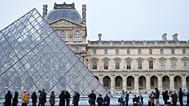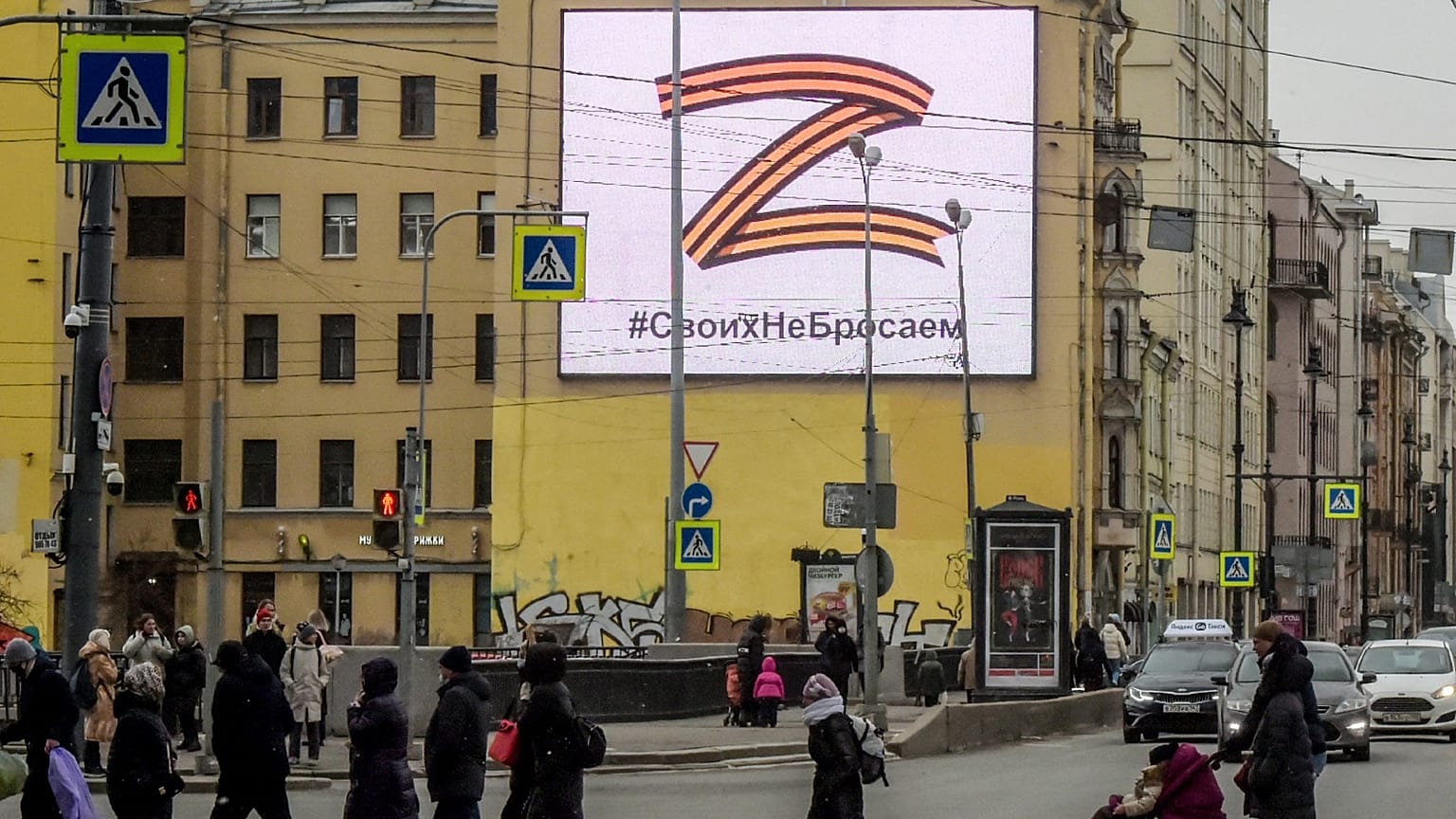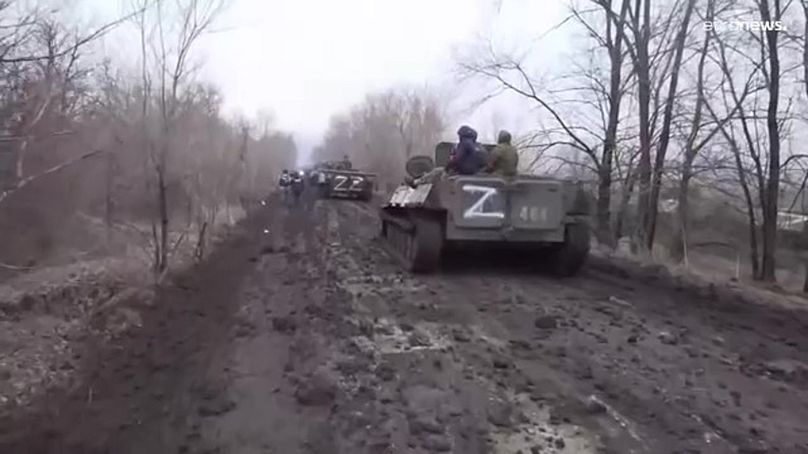The mysterious Z symbol has emerged in the last two weeks as a rallying sign for Russia's war in Ukraine.
In a matter of days, the Z symbol has become a common sight on Russian military vehicles, displayed on pro-Russia social media accounts, plastered on private cars and trucks, printed on t-shirts and hoodies, and even stuck on the leotard of a medal-winning young Russian gymnast.
Z has become the dominant symbol to show support for President Putin and Russia's invasion of Ukraine, a phenomenon that came to prominence in a very short space of time.
It even appears on some official documents, with Russian media reporting that the head of Kemerovo Oblast has decided to change the official spelling of the Kuzbass region to incorporate the Z, and Roskomnadzor, the Russian media watchdog, has capitalised the "Z" in its name on Telegram.
What does the Z symbol stand for?
Written in the Latin alphabet rather than Cyrillic, experts aren't quite sure of its exact meaning - and it's likely the people using the Z symbol also don't know for sure, even if they do understand implicitly what it stands for.
"For now, it's less clear what it is than how it is being used," said Donnacha Ó Beacháin, a professor at Dublin City University who specialises in post-Soviet politics.
"Nobody knows for sure what it means although there are various theories. Some think of Z as Za pobedy (for victory) while others think it might be Zapad (West). All the stranger because the letter Z doesn’t exist in the Russian alphabet."
While many Russian military vehicles heading west during the invasion of Ukraine did have Z painted on them -- so that theory would match up -- other military assets had different letters like V and O as well.
One popular theory on Russian websites says the letters Z, V, and O stand for "Volodymyr Oleksandrovich Zelenskyy".
Russia's defence ministry has confused things somewhat by posting on its official Instagram and Telegram pages that Z stands for: "Za Pobedu" ("for victory"), "Za Mir" ("for peace"), "Za pravdu" ("for truth"), and "Za Rossiou" ("for Russia").
Nationalist fervour
What's clear about the Z symbol is the nationalist fervour it elicits from supporters of Vladimir Putin and the war in Ukraine.
In one video clip shared online, three young men wearing black hoodies with the Z logo on the front, stand before a small crowd of people waving Russian flags.
One of them invoked the siege of Leningrad during The Great Patriotic War - what Russia calls the period of WWII after 1941 when the Soviet Union joined the side of the allies against Germany.
"Do you think that we, the descendants of people who had been dying for years from hunger but fought fascists and kept the front, will sell our motherland for dollars and iPhones?"
Another says "the task of our military now is to tighten the noose around the neck of Nazism [...] defend our people who have to fight for their right to speak freely their mother tongue".
"Our task is to defend the streets of Russian cities from traitors and provocateurs," he says, referencing anyone who speaks out against the war.
"Work, brothers! For Russia! For the President!"
Ryhor Nizhnikau, a senior research fellow at the Finnish Institute for International Affairs in Helsinki says the Z symbol feeds into that strong Russian nationalist narrative the Kremlin likes to promote.
"Russian nationalists were for a long time criticising the Russian state for a lack of action and always saying you are showing weakness towards the West, you are not active or proactive enough and you don't defend Russians enough," Nizhnikau tells Euronews.
"Nationalist groups found really an uplifting moment for them where finally the Russian state really starts to implement this new imperial policy" with the invasion of Ukraine.
Z symbol: possible spin doctor origins?
Even for experts, the origin of the Z symbol remains something of a mystery although Nizhnikau reckons it was only recently invented.
Perhaps the most simple explanation is that Z was concocted as part of a military psy-ops campaign: selecting a sign that would catch on easily in both Russia and the West.
"We might not be surprised that there is some kind of Kremlin spin doctors who thought of this in advance. They need a symbol of victory for this action in Ukraine" he explains.
"These 'marketing guys' probably said the easier the symbol is, the easier it is to spread."
The most simple explanation could turn out to be the most likely, especially given how quickly the use of the Z logo has spread within Russia itself.
Kremlin-run broadcaster RT recently started selling a range of Z symbol products in its online store; while a woman in Donetsk, a city in Ukraine's pro-Russia separatist east, posted a photo on Instagram of her nails painted in black with a white Z.
In the central Russian city of Barnaul a huge Z appeared in the snow, in the orange and brown colours of the St George's ribbon, a symbol of military valour; while flashmobs and choirs have been taking place in many Russian regions, including remote ones, with participants wearing Z signs.
Professor Ó Beacháin in Dublin says the Z sign is obviously being used to mobilise Russians to give their backing to the war.
"I'd say there is pressure for people to demonstrate support in Russia by using the symbol."

















